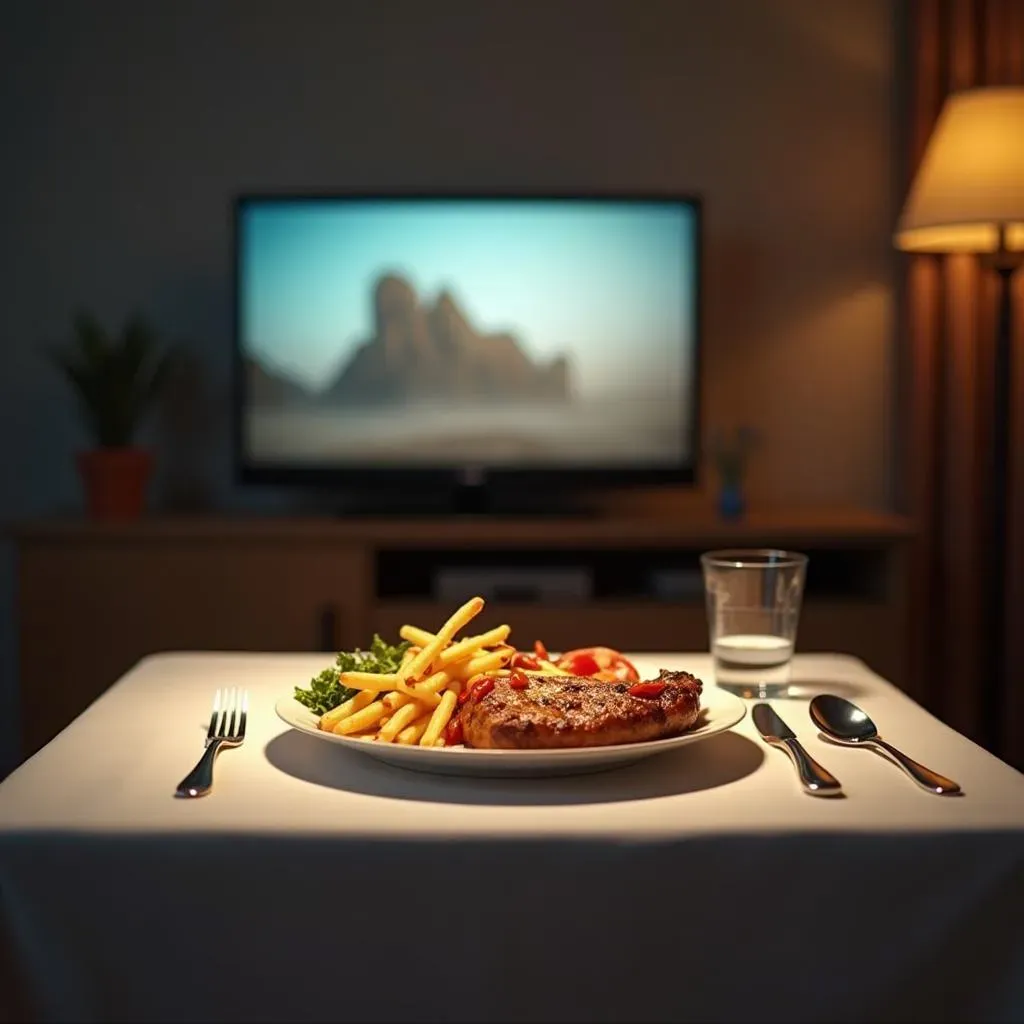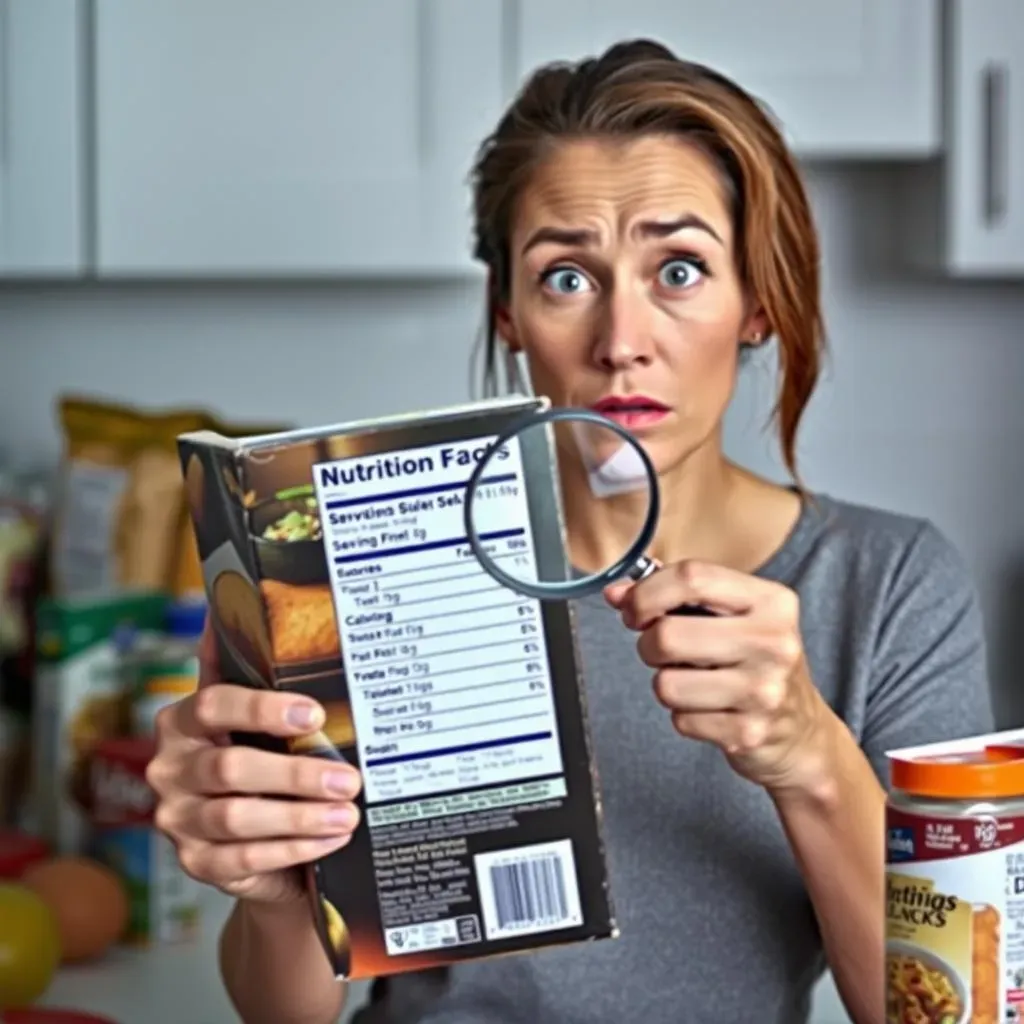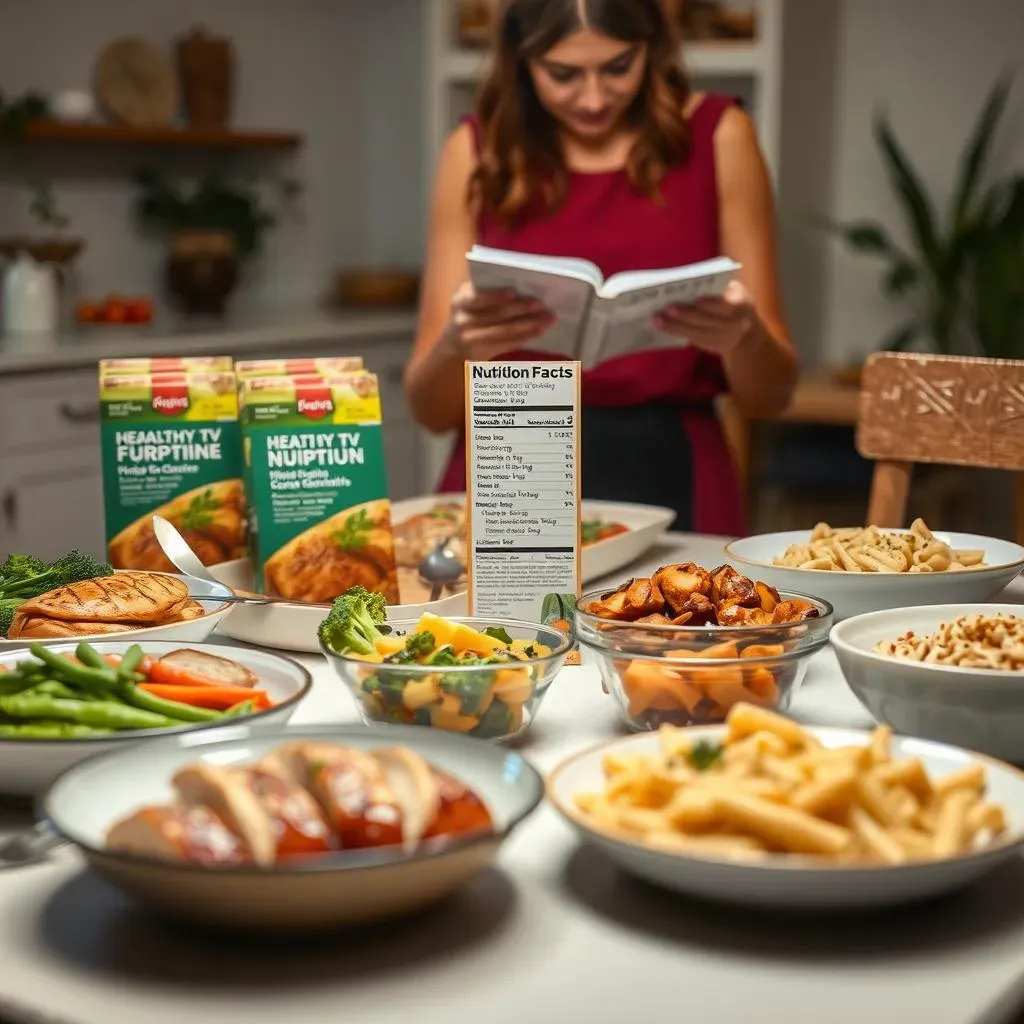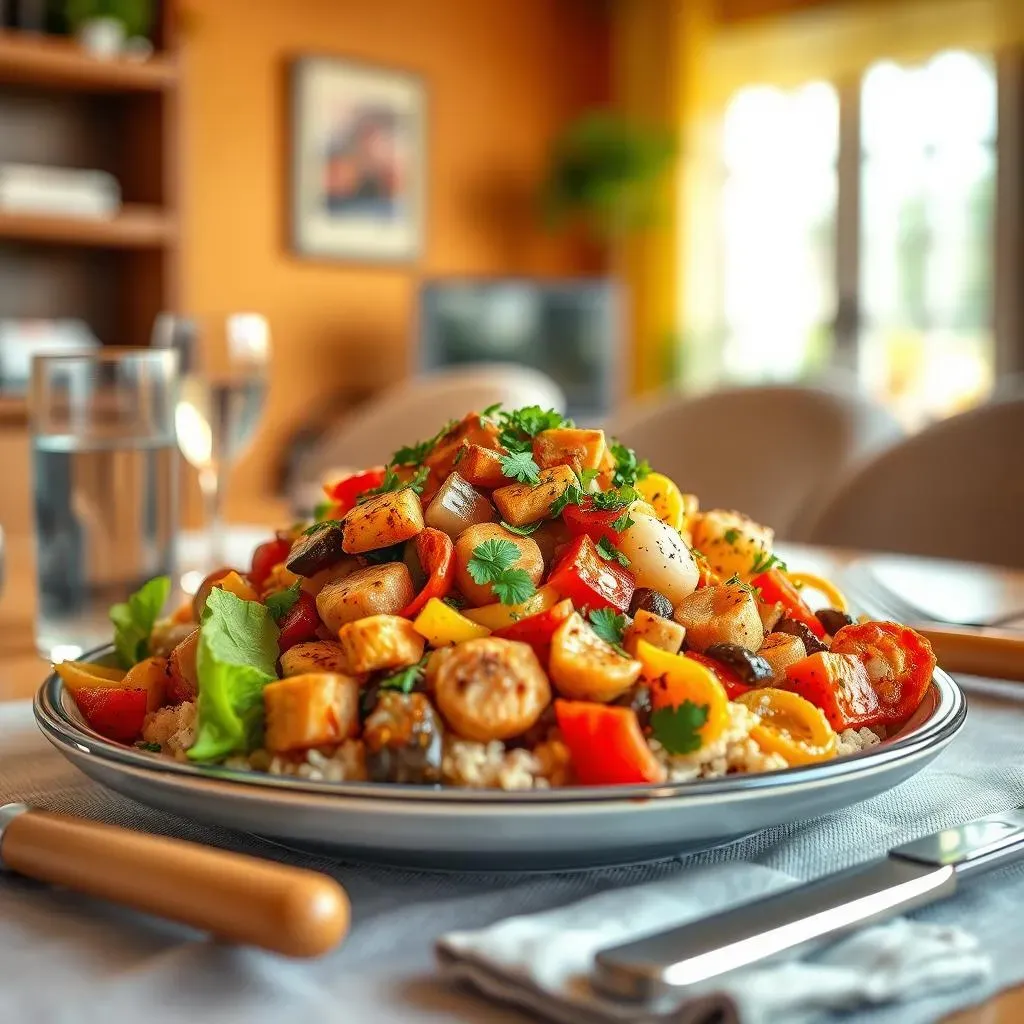Table of Contents
Let's face it, sometimes life gets hectic. The last thing you want to do is cook a gourmet meal after a long day. That's where the convenience of TV dinners comes in, right? But the big question is, can TV dinners be healthy? We often picture them as sodium-packed, nutrient-void trays of sadness, but is that really the full story? This article isn't about shaming your quick meal choices. Instead, we're going to explore the reality of frozen dinners. We'll look at what to watch out for on nutrition labels and how to make smarter choices when you're in the freezer aisle. We will discuss how to make your TV dinner a bit more nutritious. Think of this as your guide to navigating the world of pre-made meals without sacrificing your well-being. So, buckle up, and let's find out if you can indeed enjoy a healthy TV dinner without guilt.
TV Dinners: The Good, The Bad, and The Sodium

TV Dinners: The Good, The Bad, and The Sodium
The Allure of Convenience
Okay, let's be real, TV dinners are popular for a reason. Life gets crazy, and sometimes you just need a quick meal. No chopping, no mess, just pop it in the microwave or oven, and boom, dinner is served. That convenience is a huge draw for busy parents, students, or anyone who just doesn't have the time or energy to cook from scratch every night. I get it; I've been there, staring into the fridge wondering if cereal counts as a balanced meal.
The ease of grabbing a frozen meal is undeniable. They're designed to be simple and fast, which is often exactly what we need. But, like most things in life, this convenience often comes with a trade-off. That's where we start to see the "bad" side creep in. So, while they're lifesavers on those hectic evenings, we need to be aware of what we're actually consuming.
The Sodium Situation
Here's where things get a bit tricky. Many TV dinners are loaded with sodium. Why? Sodium acts as a preservative, and it also enhances the flavor, which can be necessary when you're dealing with food that's been frozen for a while. The problem is that many of us are already consuming way too much salt, and these meals can push us over the edge. High sodium intake can lead to increased blood pressure and other health issues, which isn't ideal for anyone. It is something that you should be concerned about.
It's not just about the amount of salt either. Sometimes it's the type of salt being used. Processed foods often contain additives and preservatives that are high in sodium. So, while you might be thinking, "Oh, it's just a little salt," it can actually be a significant amount when you look at the bigger picture of your daily consumption. You should be aware of this.
Nutrient | Typical TV Dinner | Ideal Goal |
|---|---|---|
Sodium | 700-1500mg | Less than 2300mg per day |
Saturated Fat | 5-15g | Less than 10% of daily calories |
Fiber | 2-5g | 25-30g per day |
Beyond Sodium: The Nutritional Landscape
The sodium issue is a big one, but it's not the only thing we need to consider. Many TV dinners are also low in fiber, and they often lack a good dose of vitamins and minerals. That's because they tend to be made with processed ingredients, and the freezing and cooking process can sometimes degrade the nutrients. You might be getting a lot of calories, but not necessarily the good stuff your body needs to thrive. This can result in you feeling sluggish and not your best.
It's not all doom and gloom, though. Some brands are starting to offer healthier options with less sodium, more whole grains, and more vegetables. The key is to be a savvy shopper and to really read those labels. We're going to get into that next, so you can start making informed choices and not just grabbing the first thing you see in the freezer aisle. We'll look at how to spot the good, and avoid the bad.
Navigating Nutrition Labels: What to Look For

Navigating Nutrition Labels: What to Look For
Okay, so you're standing in front of the freezer, ready to grab a TV dinner. Before you make a decision, let's talk labels. It's like a secret code that tells you exactly what you're about to eat. The first thing your eyes should go to is the serving size. Sometimes, what looks like a single portion is actually meant to be two. So, if you eat the whole thing, you're doubling all the numbers you see on the label. Always check that first, it's a sneaky trick.
Next, focus on the calories, fat, sodium, and sugar. These are the big hitters. You want to see moderate numbers across the board. Don't be afraid to compare labels between different brands and meals, see which one is the best option for you. Look for meals with less saturated fat and added sugars. Try to aim for meals that are lower in sodium and higher in fiber. These small changes can make a big difference in how you feel.
- Serving Size: Always check this first.
- Calories: Keep it reasonable for your needs.
- Total Fat: Watch out for saturated fats.
- Sodium: Aim for lower numbers.
- Sugars: Added sugars should be low.
- Fiber: Look for at least a few grams.
Don't just stop at the big four. Take a look at the vitamins and minerals too. Some TV dinners are fortified with extra nutrients, which is a good thing. Look for meals that have a decent amount of vitamin A, vitamin C, and iron. It's also worth noting the protein content, especially if you're trying to build muscle or stay full for longer. A good amount of protein can make a big difference in keeping you satisfied. It's about making sure your meal is working for you, not against you.
Finally, pay attention to the ingredient list. The shorter the list, the better. If you see a lot of ingredients you can't pronounce, that's usually not a good sign. Look for whole foods like vegetables, lean meats, and whole grains listed near the top. These are the things that will give you the most nutrients. Remember, you're not just looking for a quick meal; you're looking for a meal that will nourish your body.
"The food you eat can either be the safest and most powerful form of medicine or the slowest form of poison." - Ann Wigmore
Making Smart Choices: Can TV Dinners Be Healthy?

Making Smart Choices: Can TV Dinners Be Healthy?
The Reality Check
Okay, let's get real. Can TV dinners *actually* be healthy? The short answer is: it depends. It's not a black-and-white situation. Some frozen meals are nutritional nightmares, loaded with salt, fat, and not much else. But, there are other options that are much better. The key is knowing what to look for and being a bit picky. It's like choosing a player for your sports team; you don't just pick the first one you see, you look for the right stats.
The idea that all TV dinners are bad is just not true. There are plenty of brands out there that are trying to create healthier meals. These companies are using better ingredients, less sodium, and more vegetables. You just have to be willing to do a little label-reading and not just grab the first thing you see. It's a bit of a treasure hunt, but the reward is a meal that's convenient and also good for you. It's about making informed choices, not just defaulting to the "easy" option.
Smart Swaps and Upgrades
So, what does making a "smart choice" actually look like? It often starts with swaps. Instead of grabbing that super cheesy pasta dish, maybe go for a grilled chicken with veggies option. Look for meals with whole grains instead of refined grains, and prioritize meals that are packed with vegetables. Another great trick is to add your own fresh ingredients to your frozen meal. Throw in some extra veggies, a handful of spinach, or a sprinkle of nuts or seeds to boost the nutritional value. It's like giving your meal a mini-makeover.
It is also important to look at the overall balance. You want a meal that provides a good mix of protein, carbs, and healthy fats. A meal that is high in protein will keep you full for longer and help you build muscle. A good source of carbs will give you energy. And healthy fats will help you absorb vitamins and minerals. It's not just about cutting out the bad stuff; it's also about adding in the good stuff. It's like building a balanced team where each player has their own role to play.
Swap This | For This |
|---|---|
Creamy Pasta | Grilled Chicken with Veggies |
Refined Grains | Whole Grains |
High Sodium Sauces | Low Sodium Seasonings |
Mindful Consumption
Ultimately, the key to making TV dinners a part of a healthy diet is mindful consumption. This means being aware of what you're eating, not just mindlessly shoveling food into your mouth while watching TV. Take a moment to actually look at your meal, think about the ingredients, and savor the flavors. It's about making eating an intentional act, not just a means to an end.
Also, consider your overall diet. If you're eating a lot of processed foods, then a TV dinner might not be the best choice for you. But if you're generally eating a healthy diet, then a TV dinner once in a while is not the end of the world. It's all about balance. Think of it as a treat you can enjoy occasionally, not something that should be a regular part of your day. It's about finding a balance that works for you and your body, and that's what truly matters.
Tips for Healthier TV Dinners: Your Guide to Better Meals

Tips for Healthier TV Dinners: Your Guide to Better Meals
Boost the Veggie Factor
Okay, so you've got your TV dinner, and it's looking a little… beige? Let's fix that. One of the easiest ways to make your frozen meal healthier is to simply add more vegetables. Seriously, it's a game-changer. Grab some frozen broccoli, a handful of spinach, or even some chopped bell peppers and toss them in while your meal is cooking. It's like giving your dinner a superhero upgrade. This not only adds more nutrients and fiber, but it also gives you a bit more to chew on, which can help you feel fuller and more satisfied. I've found that even a small addition of colorful veggies can make a huge difference in how I feel after eating. It’s a simple trick, but it works wonders.
Don't be afraid to get creative with your veggie additions. If your meal is Italian-inspired, try some zucchini or mushrooms. If it's more of an Asian dish, some snap peas or bok choy would be delicious. The possibilities are endless! It's all about making your meal work for you and your taste buds. And the best part? You’re adding valuable nutrients that might be lacking in the original meal. It’s a win-win situation.
Protein Power-Up
Another great trick to make your TV dinner healthier is to add some extra protein. Many frozen meals are a bit lacking in this department, and protein is essential for keeping you full and building muscle. You can easily add some cooked chicken, chickpeas, or even a hard-boiled egg to your meal. These additions will not only boost the protein content but also add some more texture and flavor. It's like giving your meal a little extra oomph.
If you're a fan of fish, some canned tuna or salmon would also be a great addition. Just be mindful of the sodium content, especially if your TV dinner is already high in salt. You can also opt for plant-based options like lentils or tofu if you prefer. The goal is to make sure your meal is well-rounded and provides all the nutrients your body needs. It’s about being proactive and making sure you’re getting the most out of your meal, rather than just settling for what’s in the box.
Protein Boosters | Why They're Great |
|---|---|
Cooked Chicken | Lean protein, versatile |
Chickpeas | Plant-based, high in fiber |
Hard-Boiled Egg | Easy to prepare, great source of nutrients |
Tuna/Salmon | Good source of omega-3s |
Spice It Up (Without the Salt)
Finally, let's talk about flavor. Many TV dinners rely on salt for their taste, but there are plenty of other ways to add some zing without the extra sodium. Instead of reaching for the salt shaker, try using herbs and spices to elevate the flavor of your meal. A dash of paprika, some garlic powder, or a sprinkle of dried oregano can make a world of difference. It’s like giving your meal a culinary makeover without any extra fuss.
Experimenting with spices can also help you avoid the dreaded "blandness" that can sometimes come with frozen meals. You can add some heat with chili flakes, some smokiness with smoked paprika, or some brightness with lemon zest. It’s all about finding what you enjoy and making your meal more exciting. It's a fun way to customize your TV dinner and make it something you actually look forward to eating. Remember, eating healthy doesn't have to be boring. It can be as flavorful and varied as you want it to be, and that's the best part.
The Verdict: Can TV Dinners Fit into a Healthy Lifestyle?
So, can TV dinners be healthy? The answer isn't a simple yes or no. It's more like a "maybe, with some effort." The key takeaway is that you're not doomed to nutritional disaster just because you opt for a frozen meal. By being a savvy shopper, reading those labels carefully, and adding a few fresh elements, you can absolutely make TV dinners work as part of a balanced diet. It's all about making informed choices and not relying on them as your only meal option. Remember, even small tweaks can make a big difference. So next time you're staring at the freezer aisle, don't panic. You've got the knowledge to make a smart choice and enjoy a quick meal without sacrificing your health.